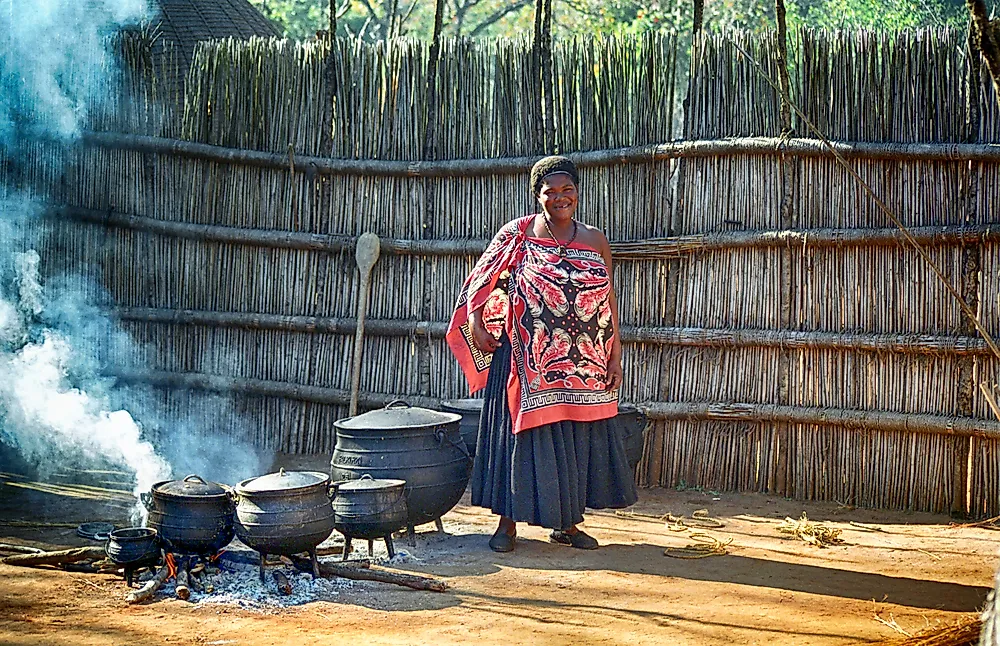What Is The Ethnic Composition Of Swaziland?

The Kingdom of Swaziland is a small landlocked country, covering approximately 17,363 square kilometers in Southern Africa. The natives of Swaziland call it the land of the Swati. The Swati people were originally a clan in Central Africa under the leadership of Dlamini I. This royal clan was called Dlamini after the chief of the clan. The Dlamini established a kingdom in the sixteenth century under King Sobhuza I and migrated southwards through Tanzania and Mozambique. The Swazi people are named after King Mswati II who served between.
Ethnic Composition of Swaziland
The population of Swaziland comprises of 97% Africans and 3% Europeans. The Swazi people are a Bantu community, with three-quarters of the African clan groups being the Nguni tribe. Other main tribes include the Sotho and Tsonga. There is a small difference between the Swati clans owing to the free intermarriage and exchange of cultures between both the locals and the foreigners. The Swati obtain their unique identity through their loyalty to the twin monarchs, Ngwenyama and Ndlovukati. Ngwenyama is the king while Ndlovukati is the queen mother.
Despite the influence of the western culture, the Swati still maintain a high degree of traditional beliefs and methods. The various ethnic groups share some common cultures such as maintaining a difference in status between the people living in rural and urban centers. Different clans are also accorded different status, the closer the clan is to the king, the higher its status.
The official languages are SiSwati and English. SiSwati is unofficially known as the language of the Nguni and is closely related to Zulu. The four administrative areas of Swazi each has its own unique dialect which is further broken down as either the royal style or crude style.
The Tsonga
This clan also inhabits southern Mozambique, Zimbabwe, and Limpopo and Mpungala province of South Africa. They are a mixture of subgroups such as Shagaan, Thongas, Tongas and other smaller groups. Farming is their main economic activity with cassava being the principal crop. They also practice pastoralism and cattle trade. They mainly speak Tsonga.The main heritage of the Tsonga is the famous face carving ritual. This practice started as a punishment by slave traders in the past but has evolved into an element of beauty. The ritual in addition to colorful dresses and decorations has enriched their culture.
The Nguni
The Nguni are divided into the Zunda and Tekela subgroups. Zunda has given rise to Zulu, Xhosa, and Ndebele languages which are majorly spoken in other countries. The Swazi fall under the Tekela subgroup. Nguni are also farmers but are essentially nomads. Their main crops include sorghum and maize, with the latter being their staple diet. The identity of the Nguni language is a characteristic "click sound" that suggests adverse intermarriage with San and Khoi women. Their most significant cultural belief is their belief that ancestors actively influence events in their life, prompting frequent sacrifices to appease them.
The Sotho
They are a small group of around 6,200 and are non-indigenous to Swaziland. Majority of Sotho are Christians. They are famous in the use of proverbs and idioms in their communication. The main staple food among the Sotho is maize. The Sotho ethnic heritage is in their music culture, comprising of singing, chanting and clapping during performing.
What Is The Ethnic Composition Of Swaziland?
| Rank | Ethnic Groups | % Of Population |
|---|---|---|
| 1 | Black | 97% |
| 2 | European | 3% |











